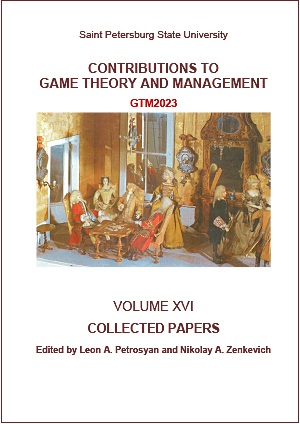Analysis and Control of Macroeconomic Trends Based on the Leontief Model
Abstract
In the present study, we consolidate the forty-five industrial sectors delineated in the U.S. input-output tables, as disseminated by the OECD, into three overarching sectors: advanced manufacturing, modern services, and a residual category termed 'others.' We adopt gross fixed capital formation as a proxy for the proportion of net profit allocated to investment, positing that the investment requisite for augmenting output is commensurate with the requisite capital intensity. This framework enables us to forecast the trajectory of total output and GDP, taking into account the interplay of multiple determinants. In addressing the inherent linear control dynamics of the input-output model, we apply classical control theory to regulate the advanced manufacturing sector. By deriving control equations that accommodate multifactorial influences, we substantiate the efficacy of this control mechanism through rigorous numerical analysis. Moreover, we reconceptualize the dynamic input-output system as a game-theoretic model characterized by a saddle-point equilibrium. By leveraging the saddle-point equilibrium strategy, we pioneer an innovative approach to resolving the complexities of dynamic input-output analysis. This methodological innovation not only enhances the precision of our predictions but also contributes a novel perspective to the literature on economic modeling and control theory.
Keywords:
Dynamic input-output model, program control, saddle point equilibrium strategy, differential game
Downloads
References
Dan, W. (2023). https://github.com/WangDan199810/Master-thesis-Wang-Dan.git.
Jin, M. Z., Tang, R. Z., Ji, YJ, Liu, F., Gao, L., Huisingh, D. (2017). Impact of advanced manufacturing on sustainability: An overview of the special volume on advanced manufacturing for sustainability and low fossil carbon emissions. Journal of Cleaner Production, 161, 69–74.
Kang, J.-L., Mao, Y. Y., and Yang, Z. F. (2002). An optimal control model for dynamic input and output with constraints. Journal of Tianjin University, 35(3), 384–388.
Leontief, W. (1956). Factor Proportions and the Structure of American Trade: Further Theoretical and Empirical Analysis. Review of Economics and Statistics, 38(4), 386–407.
Mao, Y., Fuping, B. (1992). Dynamic input-output optimal control model. Mathematical Practice and Understanding, 1992(1), 58–64.
Miller, R. E. Blair, P. D. (2009). Dynamic Input-Output Models: Basic Concepts and Solution Methods. In: Input-Output Analysis: Foundations and Extensions Cambridge University Press, 3, 331–369.
Mourtzis, D., Vlachou, E., Zogopoulos, V., Gupta, R., Belkadi, F., Debbache, A., Bernard, A. (2018). Customer feedback gathering and management tools for product-service system design. Procedia CIRP, 67, 577–582.
Qu, B., Huang, X. (1999). Optional production strategy for consumption tracking dynamic input-output systems. Journal of Systems Engineering, 12(4), 325–329.
Singhry, H. B., Abd, Rahman, A., Imm, N. S. (2016). Effect of advanced manufacturing technology, concurrent engineering of product design, and supply chain performance of manufacturing companies. The International Journal of Advanced Manufacturing Technology, 86, 663–669.
Smirnov, N. V., Peresada, V. P., Smirnova, T. E. (2021). Dynamic models of inter-industrial balance. In: Intersectoral balance: analysis of dynamics and management of macroeconomic trends (N. V. Smirnov., ed), Vol. 2021.2, pp. 58-80. Lan Press (in Russian).
Tamasyan, G. Sh. (2008). Program management and observability. Software controls, 2008, 28–32.
Downloads
Published
How to Cite
Issue
Section
License
Articles of "Contributions to Game Theory and Management" are open access distributed under the terms of the License Agreement with Saint Petersburg State University, which permits to the authors unrestricted distribution and self-archiving free of charge.




